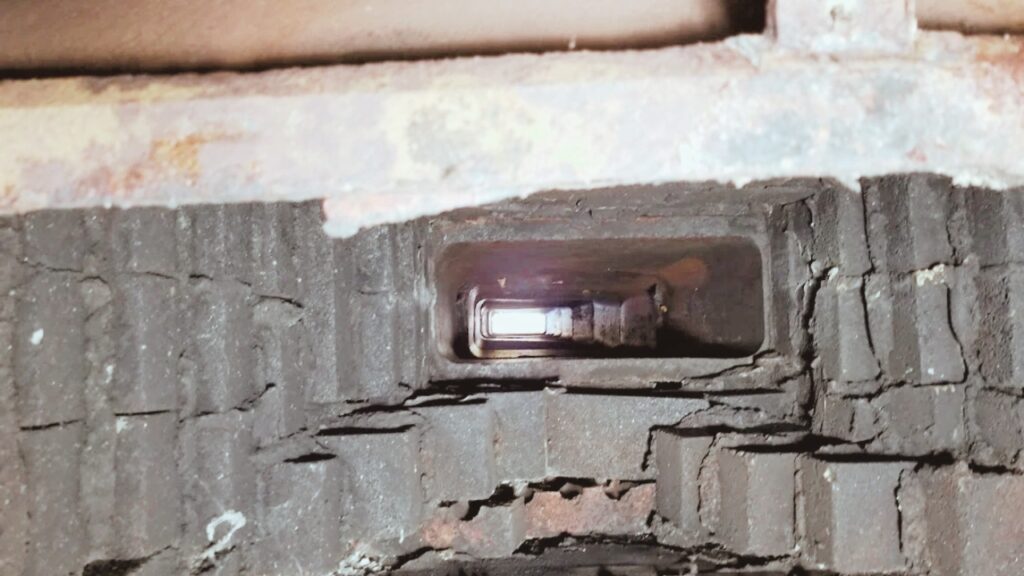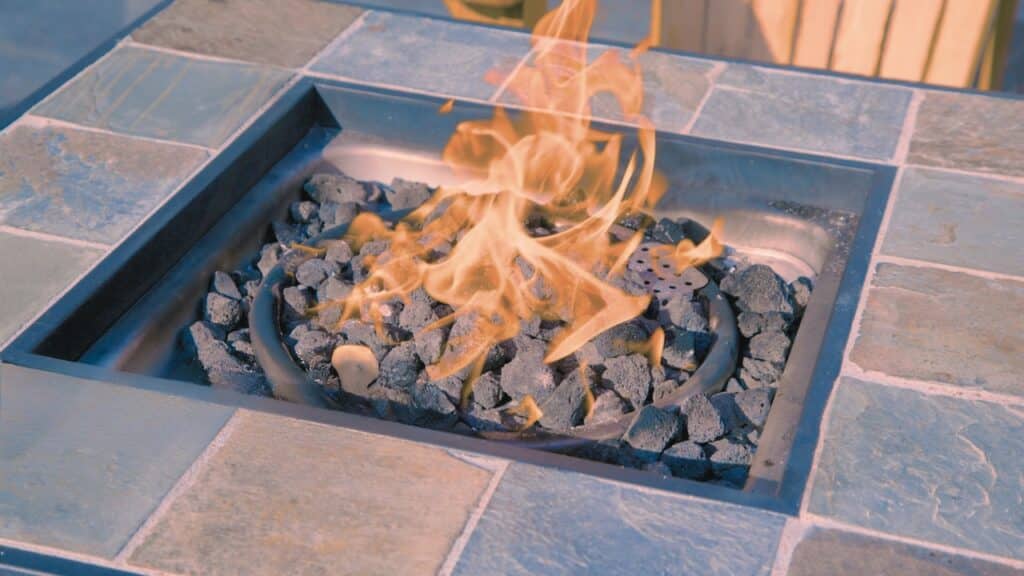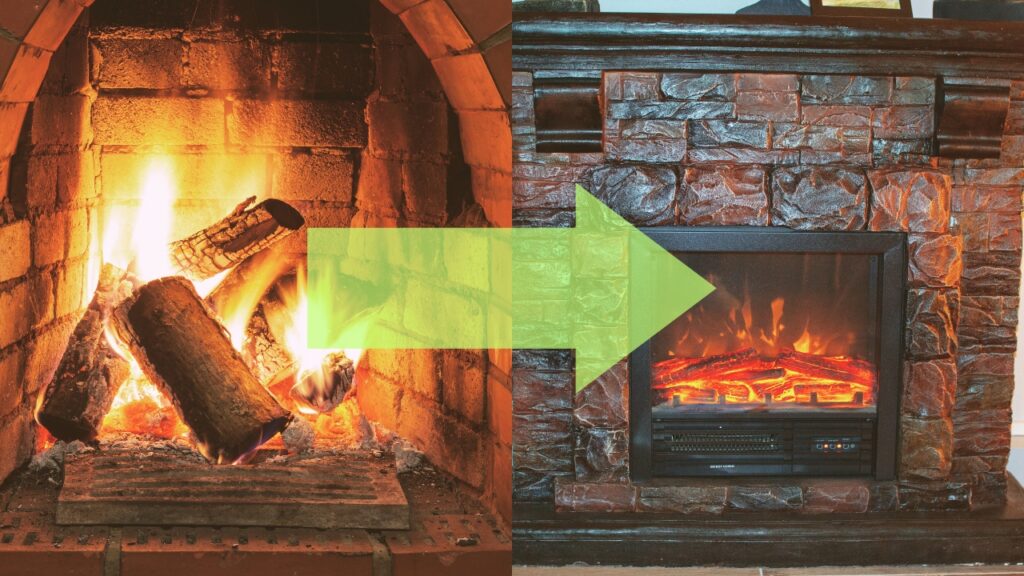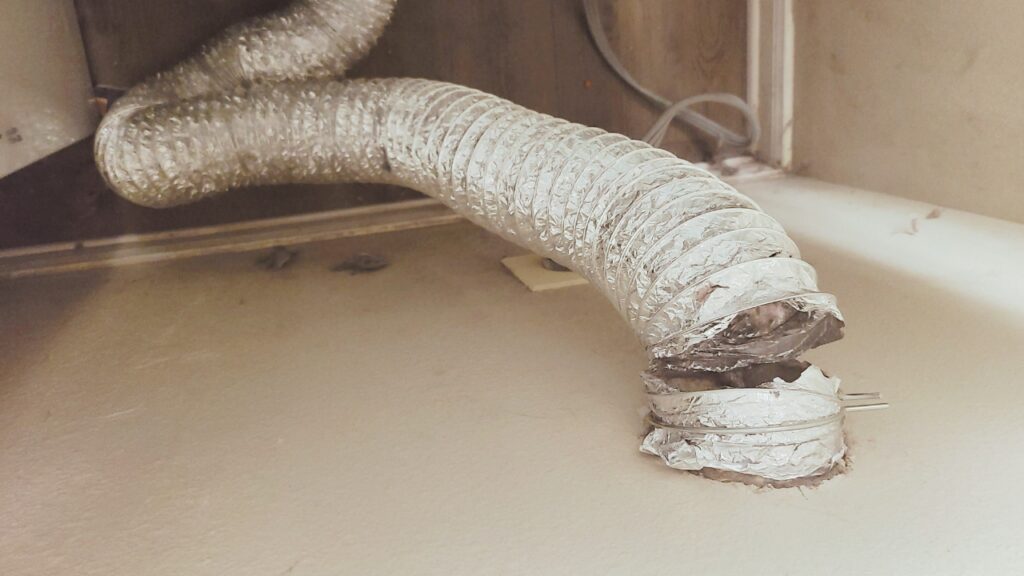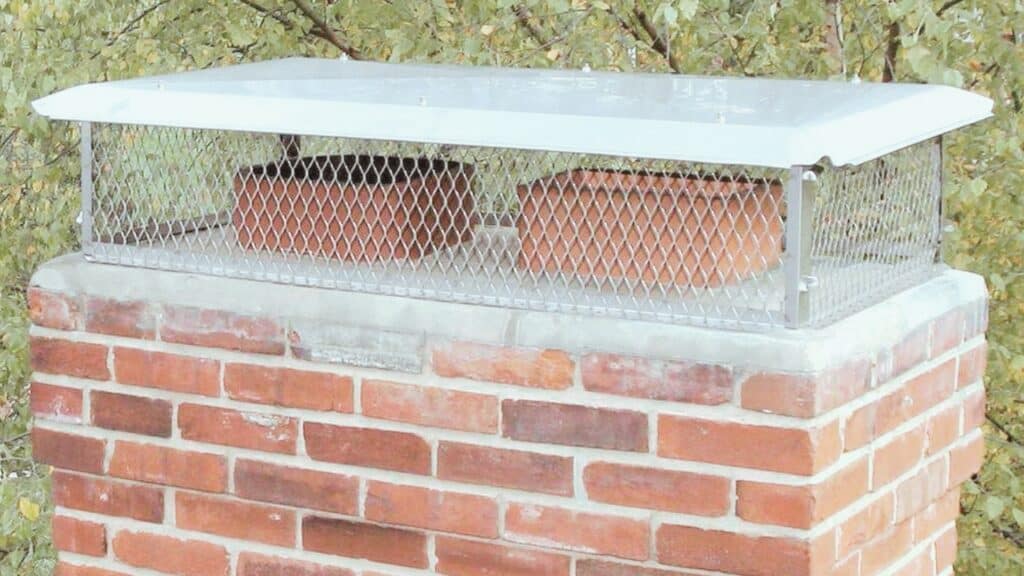In an era where comfort and efficiency are paramount in our homes, the humble fireplace insert has emerged as a silent hero. These unassuming additions to our living spaces enhance heating efficiency, making our abodes cozy and warm during chilly winter nights.
However, as we rely on fireplace inserts, proper maintenance and repair have become more relevant than ever.
In this article, we’ll look into the significance of fireplace inserts in modern homes, their pivotal role in heating efficiency, and why understanding fireplace inserts repair is crucial to keep the fire burning brightly.
So, let’s see how you can maintain and repair these essential household fixtures.
Types of Fireplace Inserts and Their Components
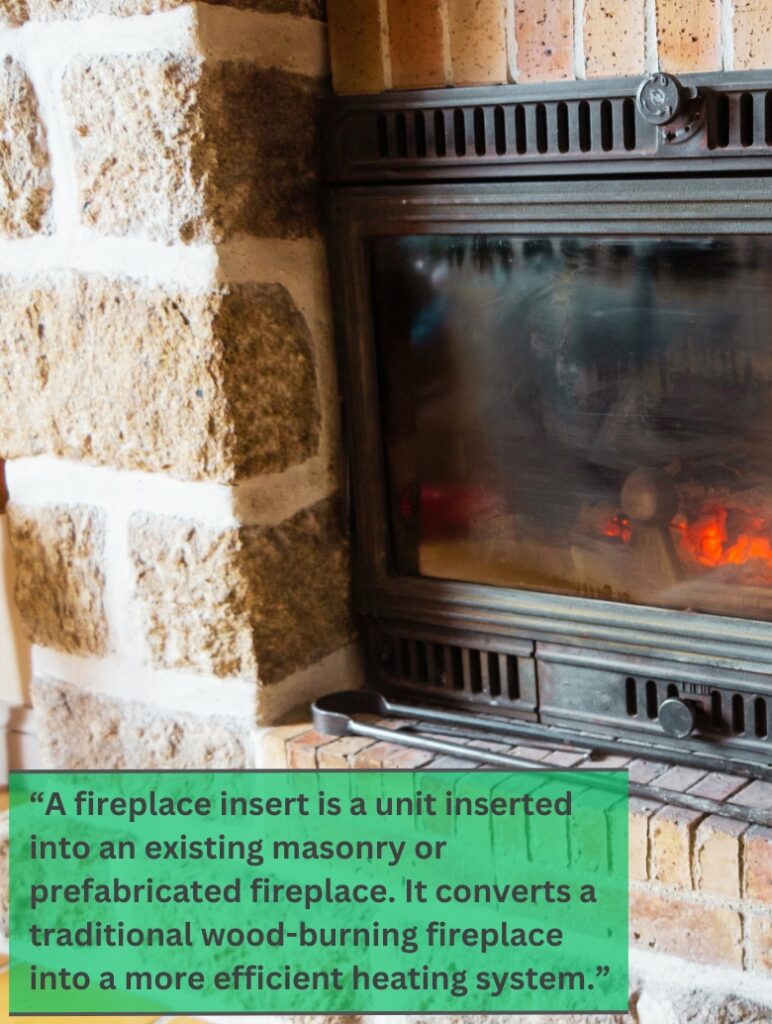
A fireplace insert is a unit inserted into an existing masonry or prefabricated fireplace. It converts a traditional wood-burning fireplace into a more efficient heating system. There are several types of fireplace inserts, each with distinct features and components:
——
Do You Need to Hire Chimney & Fireplace Expert?
Get free quotes from qualified experts near you. No commitment required!
——
Wood-Burning Inserts
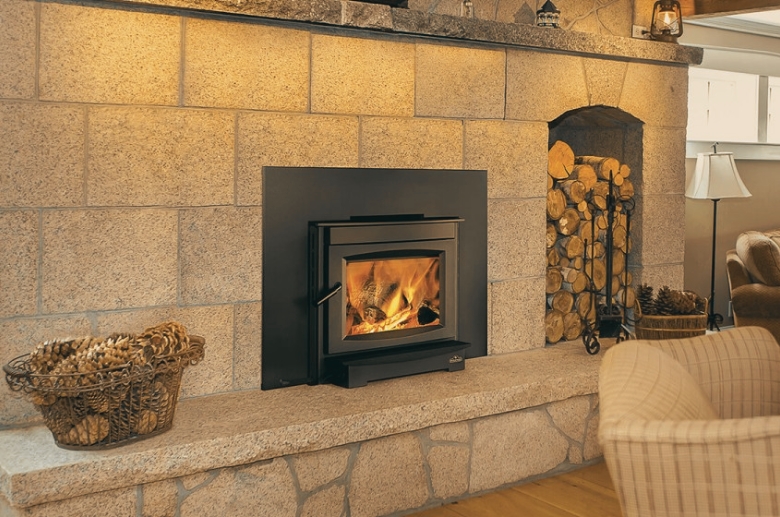
These are designed to burn wood more efficiently and produce more heat. They usually consist of a firebox surrounded by a steel shell. The components include a combustion chamber, a door with a glass panel for viewing the fire, and an exhaust pipe to release the smoke.
Gas Inserts

These are popular for their convenience and cleanliness. Gas fireplace inserts typically comprise ceramic logs, a gas burner, a control panel, and a heat exchanger. Some models also have a fan to distribute heat evenly throughout the room.
When comparing gas and wood inserts, it’s important to note these features. Gas inserts offer ease of use and low maintenance, whereas wood inserts provide a more traditional, rustic appeal but may require more frequent cleaning and upkeep. This distinction is key in choosing the right type for your home.
Electric Inserts
These inserts are easy to install and use, as they must be plugged into an electrical outlet. They often feature LED technology to mimic the appearance of burning logs or flames. Electric inserts usually come with a remote control for convenient operation.
Pellet Inserts
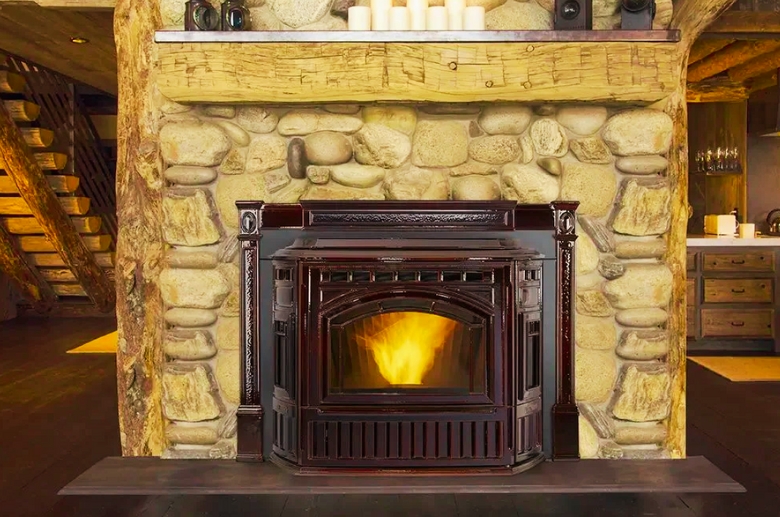
Pellet inserts use wood pellets as a fuel source, balancing the convenience of gas inserts and the ambiance of wood-burning ones. Pellet inserts include a hopper to store the pellets, an auger to feed them into the combustion chamber, and a fan to distribute the heat.
Differences Between Fireplaces and Fireplace Inserts
The primary difference between a fireplace and a fireplace insert lies in their construction, functionality, and additional features.
A traditional fireplace is typically built from bricks and mortar, stone, or other fireproof materials. It is a complete structure with a chimney and often has an open hearth for burning wood directly. This design, while classic, can be less efficient in terms of heat distribution and retention.
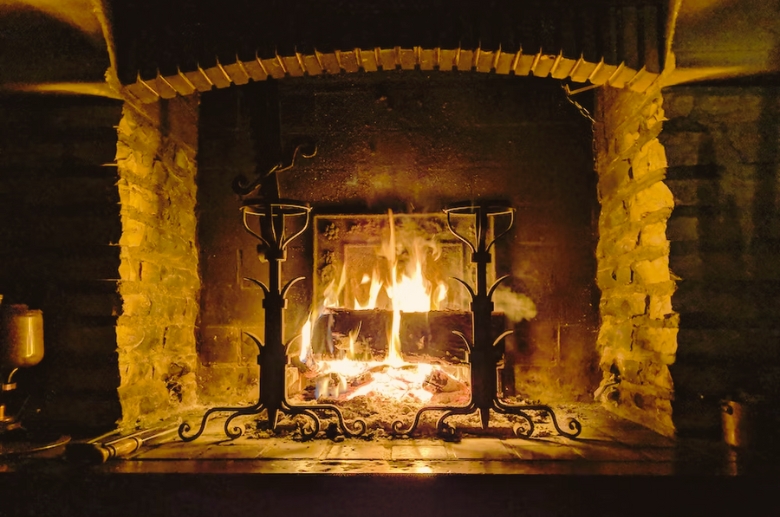
On the other hand, a fireplace insert is a self-contained unit that is retrofitted into an existing fireplace. It is typically made of steel or cast iron and is designed to significantly improve the efficiency and heat output of the fireplace. One of the key advantages of fireplace inserts is their ability to prevent the loss of heated air up the chimney, which is a common issue with traditional fireplaces.
Moreover, many wood fireplace inserts come equipped with additional features that enhance their functionality and user experience. These features often include built-in fans and adjustable fan speeds. The fan helps to circulate the heated air more effectively throughout the room, ensuring a more even and efficient distribution of warmth.
The ability to adjust the fan speed allows users to control the intensity of heat distribution according to their comfort level. This combination of improved efficiency and enhanced control makes fireplace inserts a popular choice for those looking to upgrade their traditional fireplace setup.
——
Do You Need to Hire Chimney & Fireplace Expert?
Get free quotes from qualified experts near you. No commitment required!
——
Common Fireplace Inserts Repair Problems
Common fireplace problems can arise with fireplace inserts, but with proper maintenance services and timely repairs, these units function effectively and safely. Here are some of the top issues homeowners commonly face with fireplace inserts.
- Pilot Light Malfunction – Various factors, such as a clogged pilot orifice, a faulty thermocouple, or gas supply issues, can cause a malfunctioning pilot light. This can prevent the fireplace from igniting, making it necessary to address the issue promptly.
- Ignition Problems – Ignition issues can arise for various reasons, including gas flow problems, faulty igniters, or problems with the control module. These issues can lead to difficulty starting the fireplace, posing a significant inconvenience, especially during colder months.
- Thermostat Troubles – Fireplace inserts equipped with thermostats might encounter issues with temperature regulation. Problems with the thermostat can result in the fireplace not producing enough heat or not shutting off at the desired temperature, leading to discomfort and potential energy wastage.
- Worn Out Gaskets and Seals – Over time, the gaskets and seals in a fireplace insert can deteriorate, leading to air leaks and inefficient combustion. Worn-out gaskets can also contribute to increased energy consumption and decreased heating efficiency.
- Creosote Buildup – Similar to traditional fireplaces, fireplace inserts are also susceptible to the accumulation of creosote. If not regularly cleaned, this buildup can restrict airflow, increase the risk of chimney fires, and diminish the overall performance of the fireplace insert.
- Strange Noises or Vibrations – Unusual noises or vibrations can indicate underlying mechanical issues within the fireplace insert, such as loose components, worn-out fan motors, or problems with the blower assembly. Ignoring these sounds can potentially lead to more significant problems over time.
- General Wear and Tear – Continuous usage can lead to general wear and tear of various components, including the firebox, doors, and other internal parts. This wear and tear can affect the overall functionality and efficiency of the fireplace insert if not addressed promptly.
DIY vs. Professional Repairs
When dealing with fireplace insert repairs, many homeowners often face the dilemma of whether to attempt a do-it-yourself (DIY) solution or call a professional technician. Let’s assess the two main avenues: DIY repair tips and when to call experts.
DIY Repair Tips
Repairing your fireplace insert on your own can be a gratifying experience, but it’s essential to proceed with caution. Before you roll up your sleeves, consider the potential risks involved and make sure you are equipped with the necessary safety gear.
A small error during a DIY repair can lead to costly consequences or even pose safety hazards for you and your household. Here are some tips to keep in mind:
- Safety First: Always turn off the gas or electricity supply before starting any repairs. Use protective gear such as gloves and goggles, especially when dealing with sharp edges or chemicals.
- Thorough Inspection: Conduct a thorough inspection to identify the root cause of the issue. It’s essential to understand the problem completely before attempting any fixes.
- Proper Tools: Ensure you have the appropriate tools and materials for the repair. Using the wrong tools can lead to further damage.
- Follow Manufacturer Guidelines: Adhere strictly to the manufacturer’s guidelines and instructions to avoid voiding warranties.
When to Call a Professional Technician
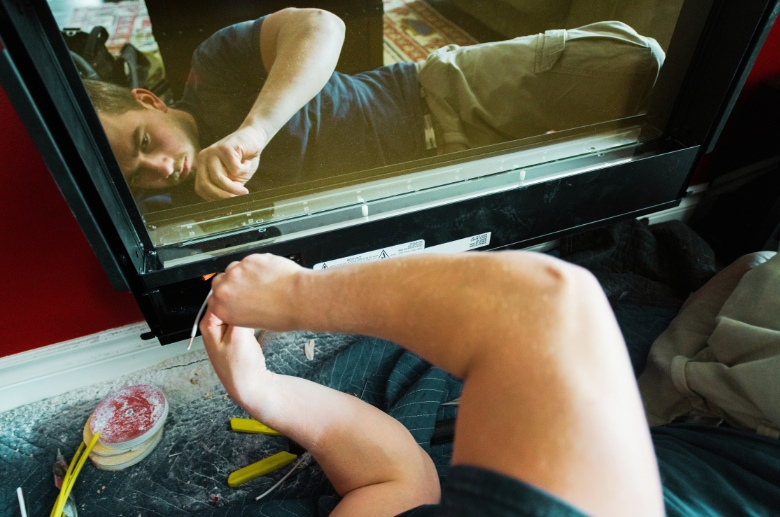
Recognizing the limits of your expertise is crucial when dealing with fireplace insert repairs. Certain signs indicate that it’s time to call in a professional technician:
Persistent Issues
If you’ve attempted DIY repairs multiple times without success, it’s an indicator that the problem might be more complex and require professional intervention.
Structural Damage
Any structural damage to the insert, chimney, or surrounding areas warrants immediate professional assessment. Ignoring such issues can lead to safety hazards.
Gas or Electrical Issues
Problems related to gas lines or electrical components should never be handled without professional expertise, as they can lead to severe accidents if mishandled.
Remember, when in doubt, it’s always better to be on the side of caution and seek the help of a trained professional.
——
Do You Need to Hire Chimney & Fireplace Expert?
Get free quotes from qualified experts near you. No commitment required!
——
Choosing the Right Fireplace Inserts Repair Service
Keeping your beloved fireplace insert in top condition is important for longevity and peace of mind. However, finding the right repair service can sometimes feel like navigating a maze. To ensure you make the best decision, here are some tips and factors to consider before entrusting your fireplace insert to anyone.
Tips on Selecting the Best Repair Service
The following are some of the things you should pay attention to when hiring professional fireplace inserts repair services.
- Experience and Expertise – Look for a repair service with a solid track record and ample experience, specifically with fireplace inserts. Specialized technicians and cleaners will understand the intricacies of these units, enabling them to diagnose and resolve issues efficiently.
- Customer Reviews and Testimonials – Take the time to go through customer reviews and testimonials. These insights provide a clear picture of the service quality, reliability, and customer satisfaction.
Factors to Consider
Now, here are the questions to ask or the requirements they need to meet.
- Licensing and Insurance – Ensure that the repair service you choose is properly licensed and adequately insured. This not only safeguards you from potential liabilities but also signifies a commitment to professionalism and quality service.
- Warranty Coverage – Inquire about warranty coverage for both parts and labor. A reputable repair service will often provide guarantees for their work, giving you added peace of mind regarding the quality and longevity of the repairs undertaken.
Estimating the Cost of Routine Maintenance and Repairs
With proper care, you can add years to the life of your insert. On average, the yearly fireplace maintenance cost of fireplace inserts hovers around $200 to $1,000.
However, the total cost of repairing your fireplace insert is determined by the size, condition, and age of your fireplace, your geographical location, and any parts needing replacement.
Lastly, if you need professional services, expect to pay between $70 and $110 per hour for masons’ services. Assuming you need a complete chimney installation due to significant damage, the cost estimate can be anywhere from $2,000 to $5,000, depending on the extent of the work required.
Weighing the Cost vs. Benefits of Timely Maintenance
While it’s understandable to be mindful of repair prices, it’s equally important to recognize the benefits of timely maintenance. Regular upkeep not only ensures the optimal functioning of your fireplace insert but also prevents minor issues from snowballing into expensive problems down the line. It’s a smart investment that pays dividends in warmth and peace of mind.
Fireplace Insert Maintenance Tips
Regular maintenance is crucial for ensuring the optimal performance and durability of an insert. Here’s what you can do to ensure that happens.
1. Regular Cleaning
Make it a habit to clean your fireplace insert regularly. Remove debris, ashes, or soot buildup to prevent blockages and ensure proper airflow. Use a fireplace vacuum or a soft brush to gently clean the interior and exterior surfaces of the insert.
2. Inspection of Components
Conduct routine inspections to check for any signs of wear and tear. Examine the gaskets, seals, and glass doors for cracks or damage. Ensure that the hinges and latches are functioning smoothly. Any abnormalities should be addressed promptly to prevent further complications.
3. Chimney Inspection
Schedule a professional chimney inspection at least once a year. This inspection ensures that the chimney is free from blockages, creosote buildup, or any structural issues that might affect the performance of your fireplace insert. A clean and functional chimney is essential for efficient ventilation and safe operation.
Monthly and Yearly Maintenance Tips
In addition to your routine maintenance practices, here’s what you should do every month and year for your fireplace insert.
Monthly Inspection
Every month, check the condition of the fireplace insert, focusing on the liner, vents, and air intake systems. Look for any obstructions or signs of deterioration. Additionally, inspect the firebricks for any cracks or damage and replace them if necessary.
Professional Yearly Chimney Cleaning
Arrange for a professional chimney cleaning at least once a year, preferably before the start of the winter season. This thorough cleaning removes accumulated creosote, which is highly flammable and can lead to chimney fires. A clean chimney ensures proper ventilation and minimizes the risk of hazardous incidents.
Take the Next Step
Taking proactive steps to maintain and clean your fireplace insert can significantly enhance its performance and prolong its lifespan. By incorporating routine maintenance practices, you can prevent costly repairs and ensure the safe and efficient operation of your fireplace insert.
If you need assistance with fireplace insert maintenance or professional cleaning companies, don’t hesitate to reach out. Contact us today to ensure your fireplace insert remains in top-notch condition, providing your house with the warmth and coziness you deserve.

